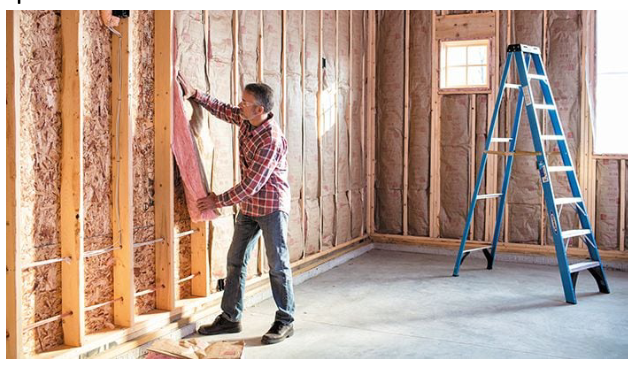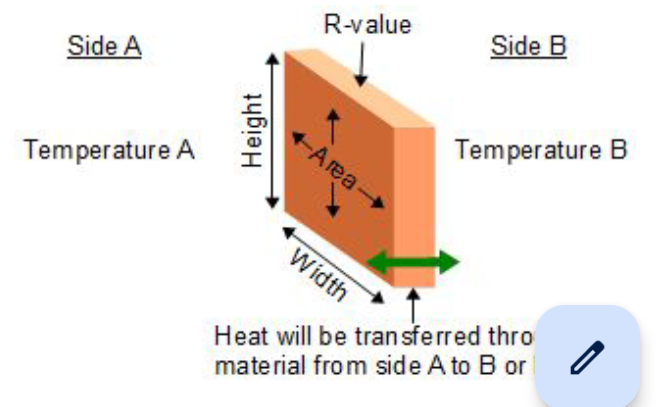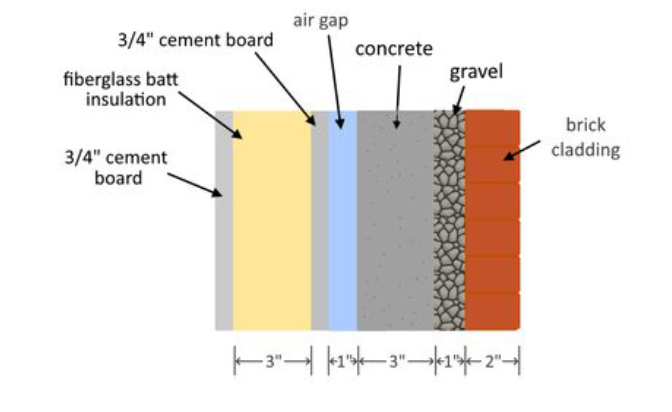Insulation Calculator
Insulation is critical to modern buildings, ensuring occupants stay comfortable while minimizing energy consumption. With the ongoing increase in energy costs and the escalating environmental concerns, it has become imperative for us to make well-informed choices about the insulation levels in our homes and businesses. This is where the insulation calculator comes into play. This powerful tool can help you determine the ideal insulation thickness for your space, maximizing energy efficiency and reducing your carbon footprint. This article will explore the different aspects of an insulation calculator, including its importance, how it works, and how you can use it to your advantage.
Why Insulation Matters?
Insulation is crucial in maintaining comfortable temperatures inside a building by slowing heat transfer. By reducing the workload of heating and cooling systems, this procedure helps conserve energy, thereby reducing energy consumption and utility bills. Additionally, proper insulation contributes to a healthier environment by mitigating greenhouse gas emissions. As a result, understanding the appropriate insulation levels for your building is an essential step in creating an energy-efficient and eco-friendly space.

What is an Insulation Calculator?
An insulation calculator is a user-friendly tool designed to provide personalized recommendations for insulation levels in a building. By inputting specific details such as location, climate, building type, and construction materials, users can receive tailored advice on the ideal insulation thickness to maximize energy efficiency. To generate accurate recommendations, the calculator considers regional weather patterns, local building codes, and heating/cooling system types.
Read More: Wind Load Calculator
How to Use the Insulation Calculator?
An insulation calculator is an essential tool for homeowners, builders, and contractors seeking to optimize energy efficiency and comfort in a building. The computation of necessary insulation levels can result in decreased energy consumption, reduced utility bills, and enhanced overall living conditions. This guide will outline the steps to use an insulation calculator effectively.
Step 1: Gather the Necessary Information
Before using the insulation calculator, you must collect vital information about your building. This includes:
- Climate zone: Identify the climate zone in which the building is located. Different zones require varying insulation levels for optimal performance.
- Building size: Determine the square footage of the building, including walls, floors, and ceilings.
- Existing insulation: If your building is already insulated, record the type and thickness of the insulation materials.
Step 2: Choose a Suitable Insulation Calculator
Several online insulation calculators are available, each with different features and levels of complexity. Select one that caters to your specific needs and is user-friendly.
Step 3: Input the Collected Data
Enter the relevant information (climate zone, building size, and existing insulation) into the calculator. Some calculators may ask for additional details like construction type, window size, and heating/cooling systems.
Step 4: Interpret the Results
Upon entering the data, the insulation calculator will provide you with the recommended insulation levels in R-values. R-value is a measure of the insulation’s resistance to heat flow. Higher R-values indicate better insulating properties. Results may differ for various building parts, such as walls, ceilings, and floors.
Learn More: Wall Framing Calculator

Step 5: Plan Insulation Upgrades
Using the provided recommendations, plan any necessary insulation upgrades. If insulation is insufficient, consider replacing it with materials that meet or exceed the recommended R-values. Choose from various insulation materials like fiberglass, cellulose, or spray foam based on cost, ease of installation, and environmental impact.
Step 6: Consult a Professional
If you need help with the best insulation solution for your building, consult a professional insulation contractor. They can assess your building’s requirements and recommend suitable materials and installation techniques. Remember that proper installation is crucial for insulation to function effectively.
Step 7: Calculate Potential Energy Savings
Many insulation calculators also estimate the energy savings you can expect after upgrading your insulation. Utilize this data to evaluate the possible return on investment (ROI) and validate the expenses of the insulation upgrades.
Step 8: Implement the Upgrades
Once you have a clear plan, proceed with the insulation upgrades. If you are someone who enjoys doing things yourself or a DIY enthusiast, it is crucial to follow the manufacturer’s instructions and guidelines when undertaking any project. The manufacturer’s guidelines provide valuable information on how to safely and effectively complete the task while also ensuring the longevity and durability of the finished product. Hiring a professional contractor is advisable to ensure optimal results for complex projects.
Step 9: Monitor Energy Usage
After completing the insulation upgrades, monitor your energy usage over time. Compare the data with previous energy consumption patterns to verify the effectiveness of the insulation improvements. This will also help you identify any additional energy-saving opportunities.

Conclusion
Insulation calculators can be useful in approximating insulation needs and potential energy conservation. Nonetheless, it’s essential to view them as a starting point rather than a conclusive solution. To achieve the best results, consult a professional insulation contractor who can provide personalized advice and ensure proper installation. Consider additional factors like air sealing, ventilation, and moisture control for a comprehensive approach to energy efficiency.
FAQs
How accurate are insulation calculators?
Insulation calculators are designed to provide a general estimate of the required insulation levels based on the input data. While they are helpful in guiding decisions, their accuracy depends on the information you provide and the assumptions made by the calculator. To get a more precise assessment, it is advisable to consult a professional insulation contractor who can inspect your building and provide personalized recommendations.
Can I use an insulation calculator for any building?
Most insulation calculators cater to residential and commercial buildings, including single-family homes, apartments, offices, and warehouses. However, their applicability may vary depending on the specific calculator, construction type, and materials used in the building. Always verify that the calculator suits your building type and consult a professional if unsure.
What if the recommended insulation levels are unavailable in my area?
Insulation calculators provide recommended R-values based on general guidelines for optimal energy efficiency. If the exact insulation materials or R-values are not available in your area, consider using materials with the closest R-value to the recommendation. Remember that higher R-values offer better-insulating properties, so opting for a slightly higher R-value may still provide energy-saving benefits.

